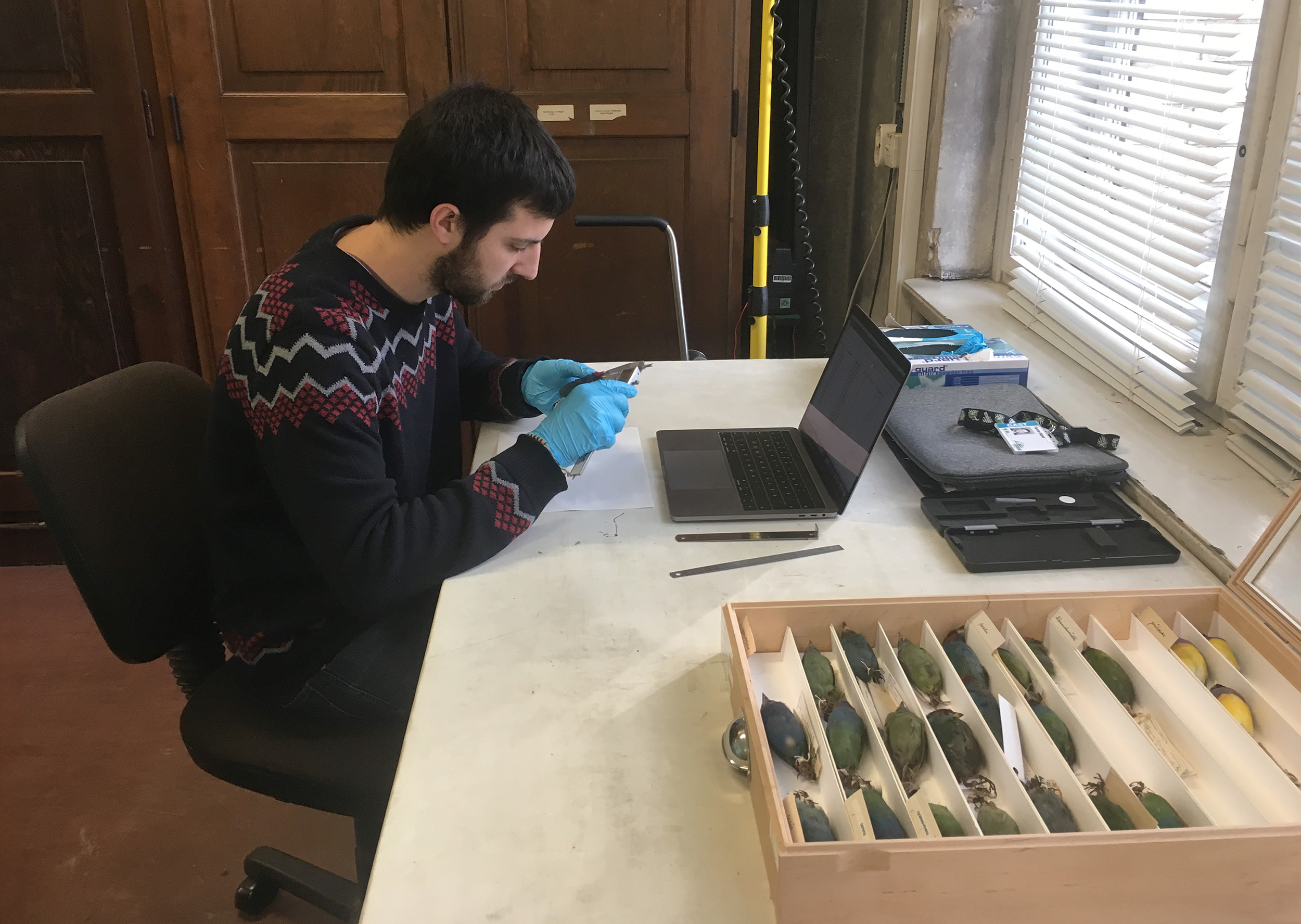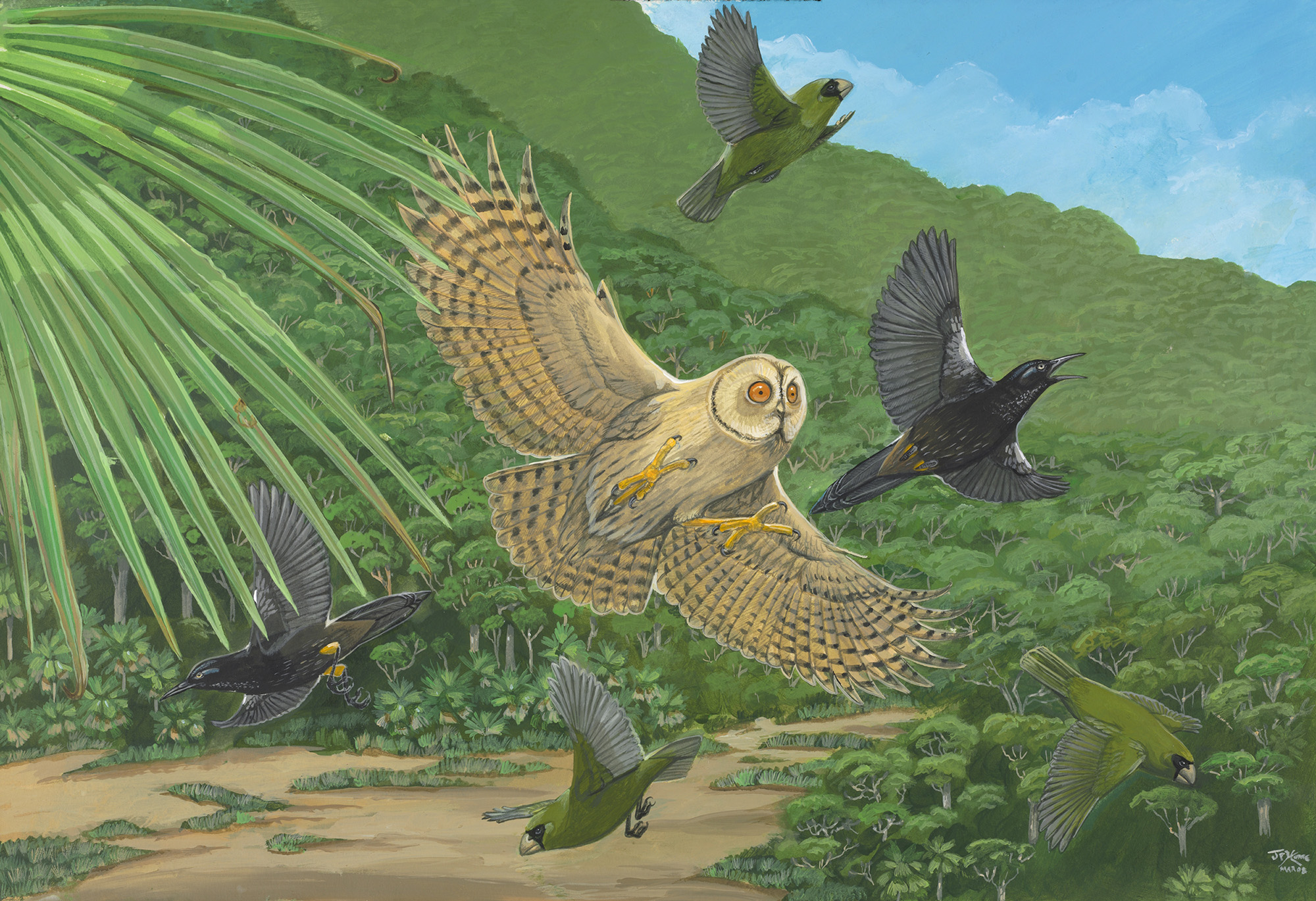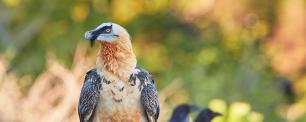The extinction of 1,300 bird species in the next 200 years could cause the loss of key ecological functions
Published today in the journal Science and led by the University of Birmingham (UK) and CREAF, a new study has delved into the past and future of bird extinctions worldwide, going back to when humans first appeared, 130,000 years ago. Since then, according to the study, at least 610 species of birds have vanished, almost all of them as a result of human activities, and more than twice as many — another 1,305 — could die out in the next two centuries alone. Looking past the figures, the study warns that the consequences of extinction are more far-reaching than previously thought, because when a species disappears, so too does the function it performs in the ecosystem. Some birds, for example, control pests by eating insects; some consume fruit and spread seeds, enabling more plants and trees to grow; some are vital pollinators; while others are scavengers, which recycle dead matter. As more species with unique roles vanish, overall functional diversity declines. The study states that 20% of functional diversity has already been lost across the planet and projects a further 7% reduction in the next 200 years.

“We’ve observed a trend of extinction of species whose role in the ecosystem is unique; for instance, the iconic dodo (Raphus cucullatus) dispersed the seeds of large fruits on the island of Mauritius, and few birds can fill that niche”.
FERRAN SAYOL, explains CREAF researcher Ferran Sayol, one of the study’s main authors.
A prime example of a species that plays a key role and is vulnerable in Catalonia is the bearded vulture (Gypaetus barbatus), which feeds on the bones of dead animals and helps recycle nutrients. “The bearded vulture isn’t endangered globally, but it is in this region,” says Sayol.
Another of the study’s findings is that 5% of bird lineages (species that are different to one another but have a common ancestor in their genes) have already died out. “That's equivalent to wiping out three billion years of evolutionary history in just a few years, akin to cutting off an entire branch of the tree of life,” remarks Sayol. Examples of extinct lineages include elephant birds (Aepyornithiformes), which lived in Madagascar and grew to be up to almost three metres tall, and moa (Dinornithiformes), large herbivores that inhabited New Zealand. “If our predictions hold true, another 3% of lineages could disappear in the future,” Sayol adds. Among them are the Drepanidinae or honeycreepers endemic to Hawaii, which have already lost half of their species and, as Sayol points out, are essential for pollinating flowers.

Ferran Sayol is analyzing birds' parameters at the Museum für Naturkunde in Berlin. Image: Ferran Sayol.
Islands: extinction hotspots
80% of all extinct bird species were endemic to islands, resulting in a 31% loss of functional diversity in such ecosystems.
Data shows that the majority of bird extinctions occur on islands. Specifically, 80% of all extinct bird species were endemic to islands, resulting in a 31% loss of functional diversity in such ecosystems. “The future doesn’t look bright: if we don’t take action, a thousand more island-endemic species could have vanished by 2224,” warns Sayol. One of the reasons for which such species are so badly affected is that they cannot ‘escape’ from new exotic species or domestic animals (like cats) that hunt them or expose them to new diseases.
In the case of Spain, species that have a vital role can be found in the Canary Islands, where the white-tailed and dark-tailed laurel pigeons (Columba junoniae and Columba bollii respectively) contribute to the regeneration of laurel forests by feeding on the trees’ fruits and spreading their seeds. “Both species are starting to find themselves endangered in Spain, and their disappearance would leave their ecological function unfulfilled,” states Sayol. Elsewhere, the Balearic shearwater (Puffinus mauretanicus), a seabird that inhabits the Balearic Islands, contributes to nutrient cycles in coastal waters through its waste. “It’s an endemic species, it only breeds in the Balearic Islands, and it’s at risk of becoming extinct,” says Sayol.
Improving conservation strategies
To conduct their research, the team behind the study analysed avian diversity loss in three key periods, namely the last 130,000 years, since 1500 (the year to which the International Union for Conservation of Nature’s extinction records date back), and the coming 200 years. To gather the oldest data, the authors travelled to different countries to visit museums where stuffed specimens, skeletons and fossils of extinct species are kept. They measured certain traits of each species, such as wingspan, height and beak size, and used their findings to infer the bird’s ecological function. “If it had a long beak, for instance, it was probably a pollinator,” explains Sayol. Combining the information thus obtained with current data and mathematical models gave the team insights into the past and future of avian extinction.

Credit: Julian Hume
“This scientific work reminds us that the current extinction crisis goes beyond numbers of species: functional diversity and lineage diversity are also declining,” remarks the study’s lead author, University of Birmingham researcher Tom Matthews. “Understanding the impact of past extinctions will help us better gauge the future consequences for ecosystems and, therefore, improve global conservation and restoration strategies,” he concludes.
In addition to the University of Birmingham and CREAF, the study involved the University of Athens (Greece); the Natural History Museum, the University of Oxford, Imperial College London, University College London, the Centre for Ecology and Hydrology, and Operation Wallacea (all UK); the University of Gothenburg (Sweden); the IRD and the Université de Pau et des Pays de l’Adour (both France); the University of Lisbon (Portugal); Nicolaus Copernicus University (Poland); and the University of the Ryukyus (Japan).
Referenced article: Matthews, T. J., Triantis, K. A., Wayman, J. P., (...) & Sayol, F. (2024). The global loss of avian functional and phylogenetic diversity from anthropogenic extinctions. Science. DOI: 10.1126/science.adk7898.







